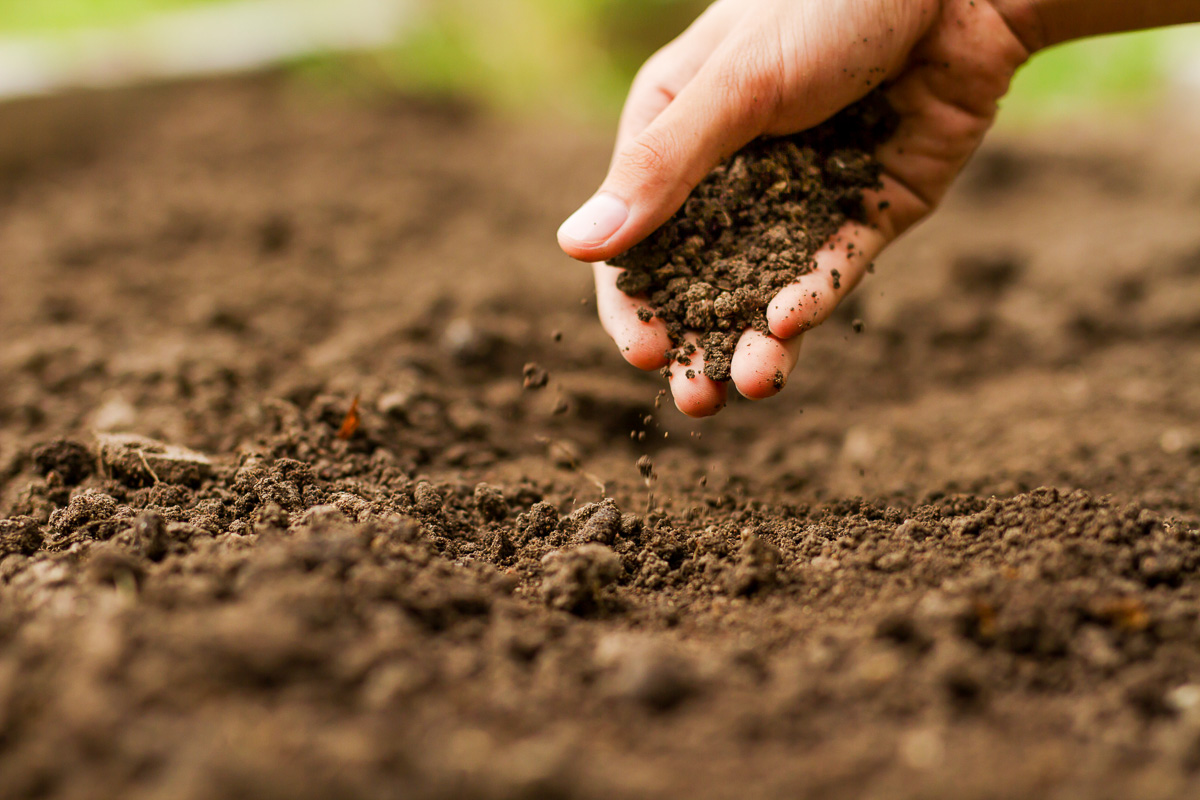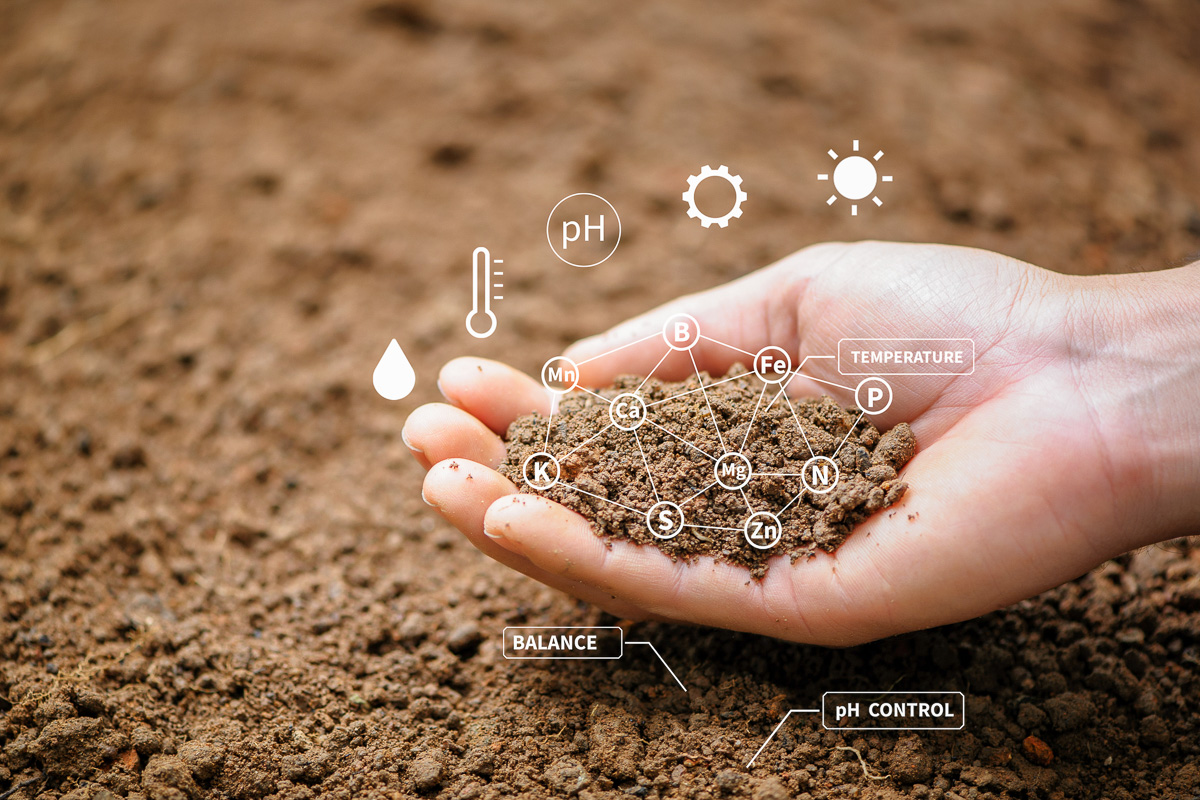
Grass is like any other plant in the yard, albeit a very small one with single, upright leaves instead of twigs and branches. Like all green plants, grass uses sunlight and chlorophyll to send energy to the roots, which in turn produces moisture and nutrients from the soil to generate new growth.
That’s why having good soil underneath is just as important for a healthy lawn like any other plant. Although grass is more forgiving about less-than-ideal soil than many other plants, it’ll grow best when both the soil quality is good and the nutrients are right.
The soil’s starting quality
Three DIY tests can give you a read on whether your lawn soil is well-drained enough and in good enough condition to support good grass growth.
The first is a drainage test. Before planting, dig a hole about a foot deep and wide and fill it with water. Give it 24 hours to drain. Fill it again the next day, and if it isn’t empty after about eight hours, drainage is poor. If water is draining faster than four inches per hour, the soil is sandy and would benefit from more water-holding organic matter to prevent drought.
A second test is for soil texture. Dig a tablespoon or so of soil and add enough water that you can roll it into a ball. If you can’t form a ball, the soil is sandy. Next, squeeze the ball to make a ribbon. The longer the ribbon goes before cracking, the more clay is holding it together. Less than two inches means good composition, while more than two inches means the soil is clayish.
The third test checks the soil makeup. Dig two to three cups of soil from six inches deep in your lawn bed and let it dry on newspaper for 24 hours. Then crush any lumps and sift out any rocks, roots, and other non-soil debris.
Pour two cups of the sifted soil into a quart glass jar and add one tablespoon of powdered detergent. Then fill the jar with water, seal, and shake vigorously for three minutes. After one hour, the biggest sand particles will settle into a bottom layer. After two hours, the slightly smaller silt particles will settle into a second layer. And after 24 hours, the smallest clay particles will settle into a third layer.
Ideally, all three layers will be about the same thickness. But if the sand or clay layers are significantly thicker than the others, that’s a sign that amending would be helpful.
Improve poor soil by loosening or tilling it six inches deep and working in an inch or two of compost, chopped leaves, rotted cow manure, mushroom soil, or similar organic matter.

piyaset / iStock / via Getty Images
The soil’s nutrition
A second consideration is the nutrients in the soil and whether the soil is “fertile” enough.
DIY soil tests, available from most state land-grant universities and their Extension services, will tell you the soil’s acidity level (pH) and give you a breakdown of the basic nutrient levels. The report will give recommendations on what fertilizer (if any) is needed and in what amounts before planting.
Retesting every two or three years helps make sure you’re applying the right ongoing fertilizer and giving the lawn optimal growing conditions.
See GreenView’s lineup of lawn fertilizers

Khanchit Khirisutchalual / iStock / via Getty Images
What about an existing lawn?
If an existing lawn is doing poorly due to lousy soil underneath, it’s possible to gradually improve it without having to dig up the whole lawn and start over.
Aerating is a good way to improve both drainage and compaction. Best done in the fall, aerating uses a machine with a rolling drum to remove finger-sized soil cores and deposit them on the lawn surface. This allows the soil to expand and creates looser space for grass roots to penetrate.
Aeration is ideally followed by “top-dressing” the lawn, which involves adding a light (quarter-inch) layer of sifted compost or similar, fine organic matter over the lawn surface. Some of this organic matter will find its way into the core openings, giving results similar to working compost into the ground by tilling.
Aeration and top-dressing can be done each year to correct poor underlying soil little by little.
Read more on aerating the lawn
Read more on top-dressing the lawn